Have you been to one of the cafes at Restoration Hardware? They are awesome spaces that bring together architecture and nature. They provide the nourishment of natural sunlight, plants, and water fountains, with total comfort all four seasons. Whether you are escaping Chicago’s chill (image above) or getting respite from a hot Florida summer sun, these spaces simultaneously expose you to the elements and protect you from them.
Architecture spent so long protecting us from the extremes of nature. Our homes and workplaces are designed in such a way that we are so protected that we are now feeling alienated from nature. We are in need of design which reconnects us with nature. Biophilia is mankind’s inherent biological connection with nature, and thus biophilic design is a solution to this growing problem. And, it is happening all around you if you take notice!
HEALTH BENEFITS
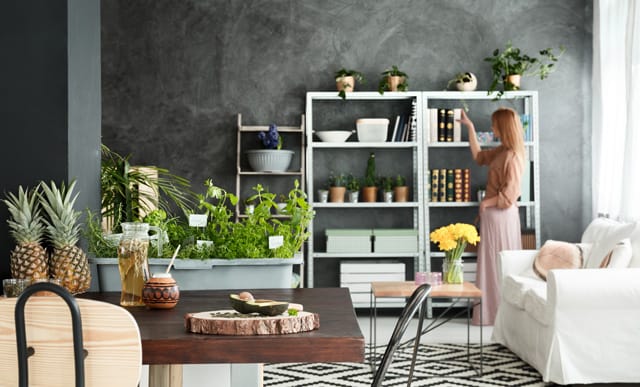
We are significantly influenced by our natural surroundings. Exposure to nature, or indulging in an activity that involves interaction with nature, nurtures our being.
Biophilic design has created an opportunity for people to live, work, and socialize in healthy and happy spaces. It enables us to regain our mental and physical energy. With stress levels increasing, related illnesses such as cardiovascular disease and mental health disorders are top contributors to disease.
This style of design decreases stress levels, blood pressure, and heart rate, improves overall health, accelerates healing, and enhances clarity of thought and creativity. Plants contribute to improving the quality of indoor air, they use the carbon dioxide and produce oxygen, and absorb volatile organic compounds, and are thus good for the lungs and blood. In addition, they also help keep indoor spaces cool and reduce noise.
Nature has the ability to trigger different emotions in humans. For example, views of a garden can increase our creativity, while a walk through a park or playing with your pet can be healing. In Japan, the practice of spending time in the forest and mindfully appreciating nature called Shirin-Yoku is known to combat stress, and boost brain health and mental well being. It benefits us too- we just don’t have a name for it!
BENEFITS FOR OFFICES

Businesses lose billions every year on lost productivity because of stress-related illnesses. Corporates are making investments in biophilic design, which helps employees sustain their physical and mental energy, and thus significantly improve productivity and positivity. Positive employees tend to be healthier and thus take fewer sick days.
A welcoming and thoughtfully designed work environment with a healthy exposure to greenery and natural light, reflects the organization’s awareness, green-credibility, and desire to keep employees happy. This gives corporates an advantage over the competition to attract and retain top talent. Tech giant Facebook has a 9-acre park on its roof at its Silicon Valley headquarters. Amazon’s Seattle office is designed as a rainforest and houses about 40,000 plants.
Integrating biophilic design in office buildings is a cost-effective way to add points to the building’s LEED or WELL Building certification.
BENEFITS IN OTHER SPACES
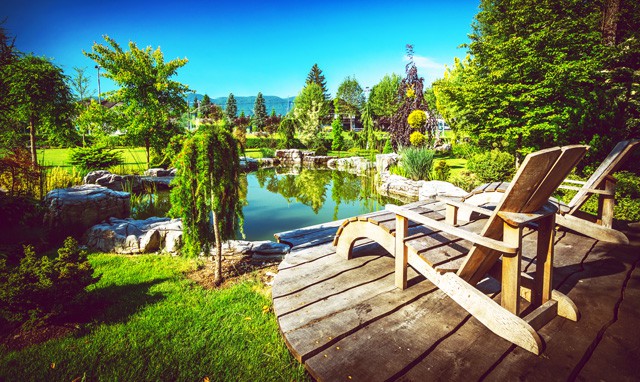
Studies have proven that biophilic design can have positive effects even outside the office.
With vast syllabus, assignments, and project work, school and university can be very stressful for students. In addition to building their environmental awareness, biophilic design results in improved grades, concentration, and attendance. It reduces the impact of attention deficit hyperactivity disorder (ADHD) and also increases the rate of learning by about 20-25%. Green design in healthcare spaces has resulted in the reduction of pain medication by 22% and a decrease in post-operative recovery times by 8.5%.
In the hospitality and retail space, customers are willing to pay 8-23% more for rooms and retail spaces exposed to more greenery. Biophilically designed homes also demand higher rental rates and property prices. Homes can expect a 4-5% increase in selling price just by being more exposed to natural elements.
BIOPHILIC DESIGN PATTERNS
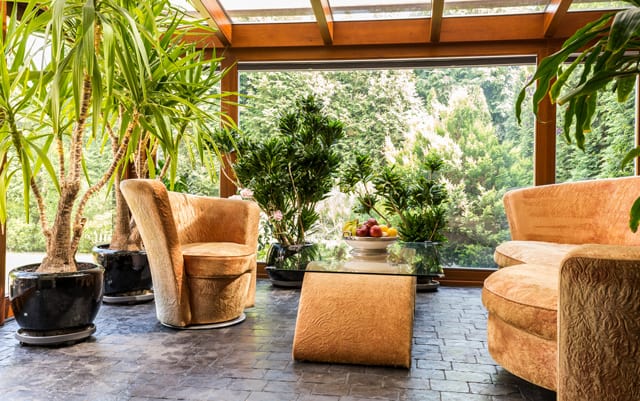
Biophilic patterns include; visual, which involves the creation of views of nature to create positive effects; non-visual, which creates olfactory, auditory, or haptic connections with nature; non-rhythmic sensory stimuli, which involves unpredictable ephemeral connections; airflow, where natural environments are mimicked by changes in airflow, temperature, and humidity; water, which includes seeing, touching or hearing water; light, where different intensities of light and shadows are used to mimic conditions in nature; natural systems, where natural processes such as seasonal and temporal changes are created; integrating symbols, patterns, arrangements, and materials from nature; and creating landscapes that trigger reactions such as safety, refuge, mystery or danger.
All these patterns affect stress, cognitive performance, and emotions.
INTEGRATING BIOPHILIC DESIGN IN SPACES
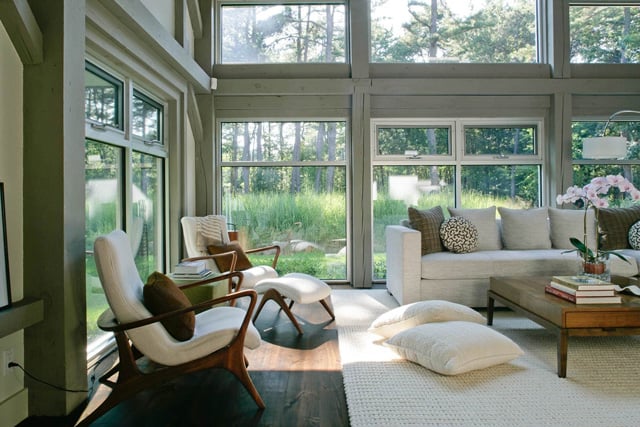 Image Source : Betty Wasserman Art & Interiors
Image Source : Betty Wasserman Art & Interiors
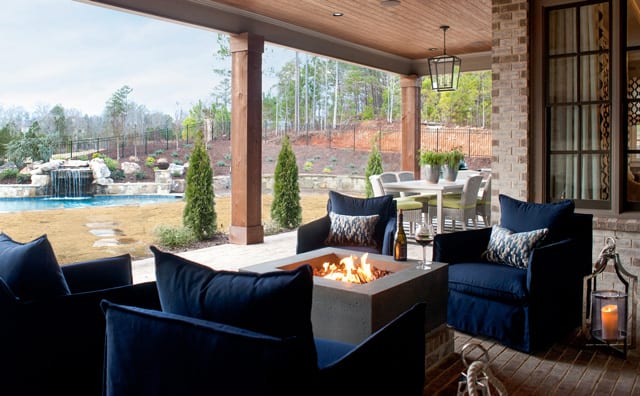 Image Source : Nandina Home & Design
Image Source : Nandina Home & Design
 Image Source : Susan Hersker Interior Design
Image Source : Susan Hersker Interior Design
The simplest way to begin bringing biophilic principles to space is by liberally using potted plants. You could use plants of varying heights and textures, and scatter or place them in clusters. Hanging plants, living green walls, and moss walls are other options. Moss walls and potted ferns do not require much natural light and are hence suitable for indoor spaces. Living green walls act as insulators, keeping heat out during summers and retaining it during the winter.
Create green areas in spaces where there is ample natural lighting. Use large windows or doors in homes to invite in natural light and provide great views of greenery. Water bodies are both visually pleasing and euphonious. Use different colors and scents. Each plant or material used has a different effect. For example, peace lilies enhance focus and can be placed in study rooms.
Good biophilic design is a combination of being healthy, happy, restorative, and functional. It is where design brings even more well-being to our lives.
I’d love to see more residential designers explore biophilic principles and follow commercial designers in bringing more harmony into our spaces.
If you utilized biophilic practices in your designs, send them my way. I’d love to include them in my blog!♥


